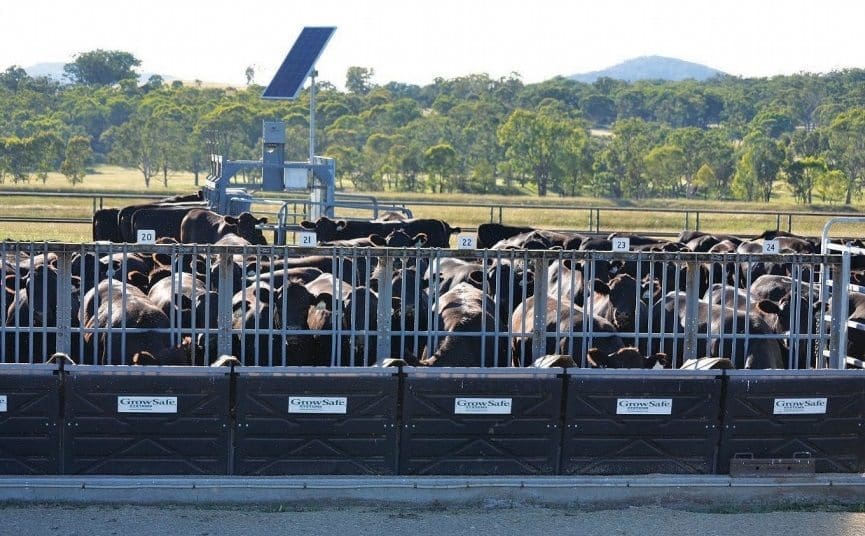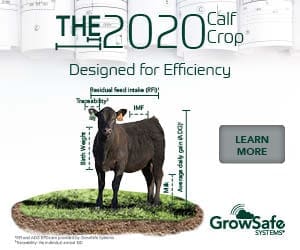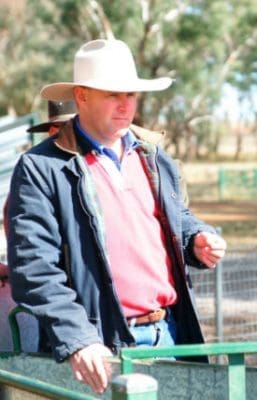
Feed intake collection on steers using the GrowSafe system at Tullimba Feedlot, Kingstown, NSW.
IMPROVING feed efficiency within the beef industry has long been a topic of great interest to breeders as well as those involved in finishing cattle on either grass or grain.
Beef Central has closely followed the progress of Net Feed Intake (NFI) research over several years, particularly focusing on the increase in new tools and the developments that may lead to greater industry progress in this area. This week’s review starts a series of reports looking into NFI from a range of perspectives – breeders, lotfeeders and researchers included.
Net Feed Intake, or NFI as it is commonly termed, is a measure of residual feed intake after adjustment for differences in average body weight maintained and growth rate through the test period.
Animals with a negative NFI value consume less feed than expected, based on their growth rate and body weight maintained, while animals with positive NFI value consume more feed than expected for their growth performance and average body weight.
As can be expected, the opportunity to ‘do more with less’, has great appeal to many parts of the beef industry supply chain. As a trait, feed efficiency has around 40pc heritability, in line with weight and carcase traits. This suggests there are good opportunity to make changes within herds, towards more feed-efficient animals, if breeders are so motivated.
Tasmanian (and formerly Queensland) Angus breeder David Raff is a strong advocate for the importance of using the industry’s available tools of genomics and performance recording to select and use more feed-efficient bulls in industry programs.
“As an industry, we now have access to tools like genomics to identify those sires which can make a significant difference across the entire chain. It’s important to think about the value that a program can benefit from, by being more feed efficient,” he said.
In discussions with many seedstock and commercial breeders, breeding more efficient cattle is a frequently cited objective.
Many breeders consider improving feed efficiency as being an important objective for the broader industry. Having cattle that eat less for the same weightgain result is an easily stated objective. However, measurement of that efficiency and capturing a payment for that trait is more challenging.
Who benefits?
The benefit in improving NFI is often placed in the context of the benefits to a feedlot program and the overall cost savings that would come from decreasing the amount of feed required annually. While this is broadly true, most lotfeeders I’ve spoken to regarding NFI remain more cautious on the subject.
 Much of this caution is due to the practicalities of operating commercial feedlots which are, in the main, dependent on lines of cattle from multiple breeders and programs.
Much of this caution is due to the practicalities of operating commercial feedlots which are, in the main, dependent on lines of cattle from multiple breeders and programs.
As Michael MacCue of Wilga feedlot in NSW outlined, identifying individual cattle in commercial pens is practically impossible. “We can have up to 200 animals in a pen, and they can come from a number of sources. We can identify differences in weightgain and carcase weight, but as a line or individuals, how much they ate to achieve that is not possible,” he said.
Mr MacCue said while NFI as a trait was important, it had to be placed in the broader context of feedlot operations.
“The big cost or efficiency, for us, is actual cost-of-gain. That is, how much it costs us to prepare a ration to achieve the weightgain we are aiming for. At the moment that is an area that gives us greater opportunities to manage our margins,” he said.
Several other feedlot operators shared this view. While not willing to be publicly identified, all operators spoken to cited the cost in infrastructure to allow a commercially sized feedlot to individually identify animals in order to measure their NFI as being economically impossible.
“The savings that come from improved NFI, when compared to increased daily gain, are chalk and cheese,” said one NSW feedlot operator. “In terms of NFI, if an animal ate 0.5kg/day less over 100 days, that’s only saving 50kg of feed.
“At my current ration that’s saved about $25. However, if I can get an increase in ADG of 0.3kg or an extra 30kg of weight over that time period, that can increase my return by $108. Efficiency is good, but I can’t afford not to have that daily gain.”
Mr MacCue agreed that NFI was a trait that is important, but said it was not going to be the trait that would make huge changes to the overall profitability of an animal or a feedlot.
“If we don’t get health protocols or rations correct, then the savings in NFI, which are really only small at this stage, can be overwhelmed very easily.”
Perhaps one of the overlooked areas of the NFI discussion is the benefit in selection for this trait in breeding herds. Across beef enterprises, around 70pc of feed resources consumed in an animal’s lifetime are used by the breeding herd, with 70pc of the feed consumed being used for maintenance.
The amount of feed used to maintain breeding cows is a significant area where improvements for beef businesses can be made. Selecting for improved NFI to decrease feed costs and improve efficiencies at the breeder level is an area which may open greater opportunities for producers, rather than focussing only on the feedlot sector within the industry.
- Next week’s Genetics Column will explore the changes to Breed Object and the opportunities to use NFI within the breeding herd.

Alastair Rayner
Alastair Rayner is the Principal of RaynerAg, an agricultural advisory service based in NSW. He regularly attends bull sales to support client purchases and undertakes pre sale selections and classifications. He can be contacted here or through his website www.raynerag.com.au
